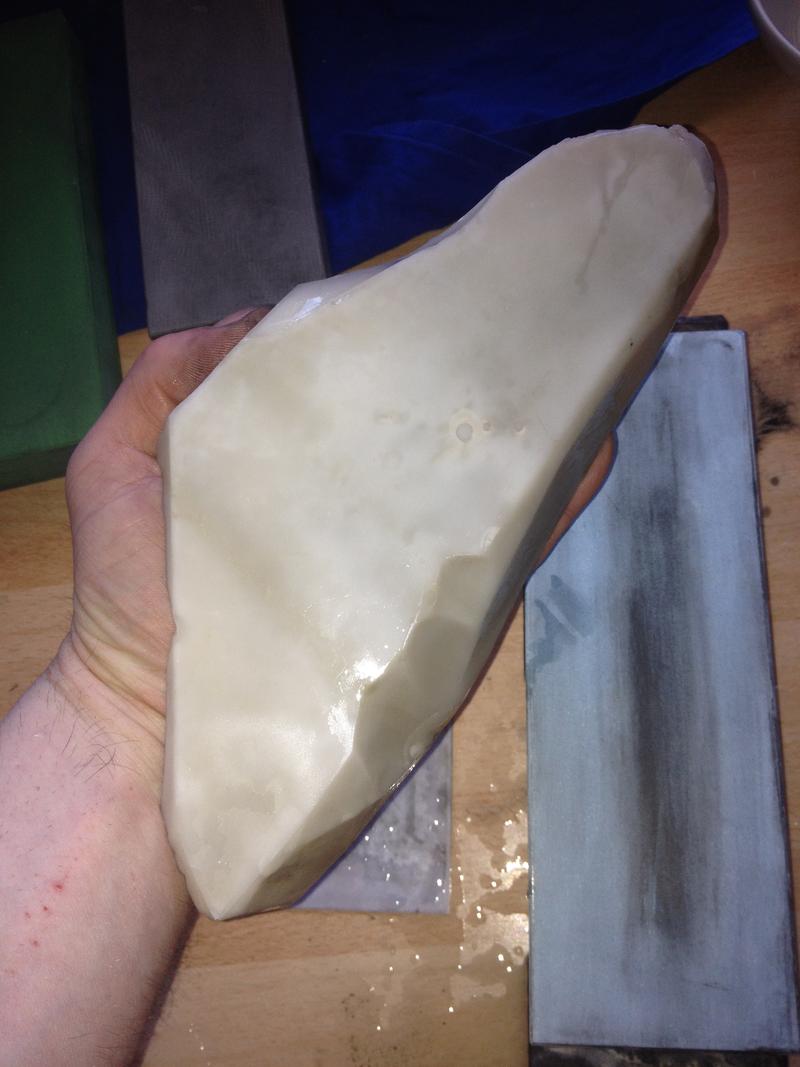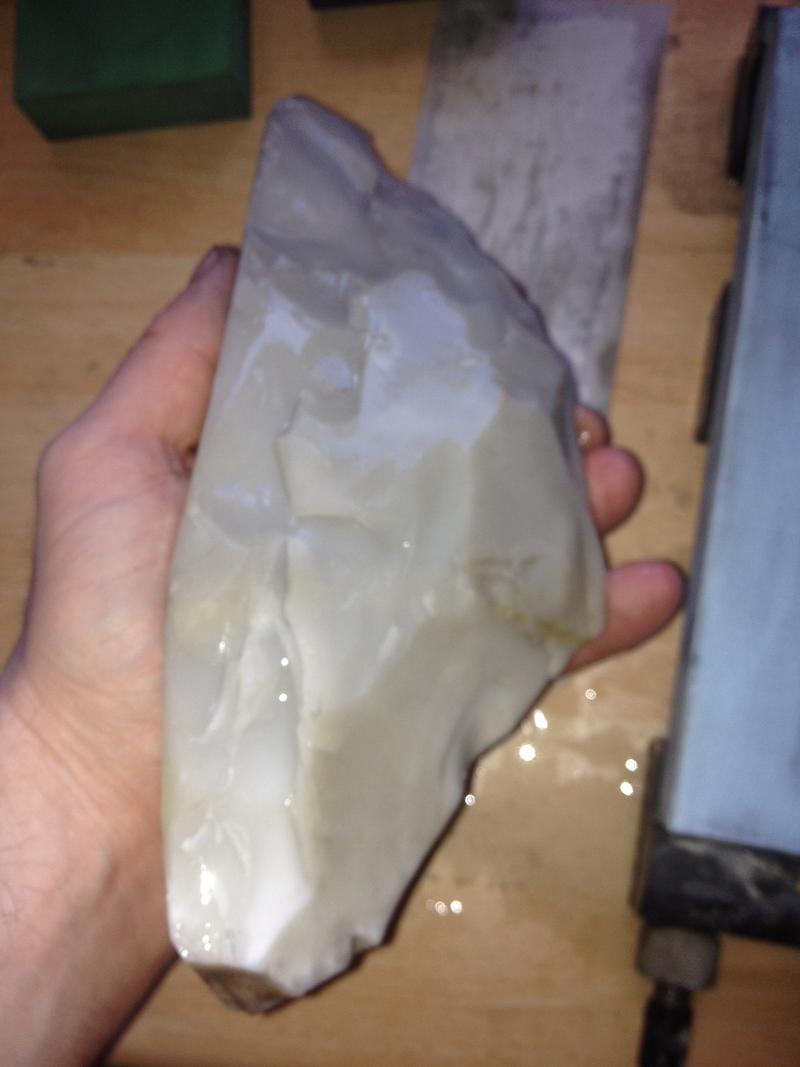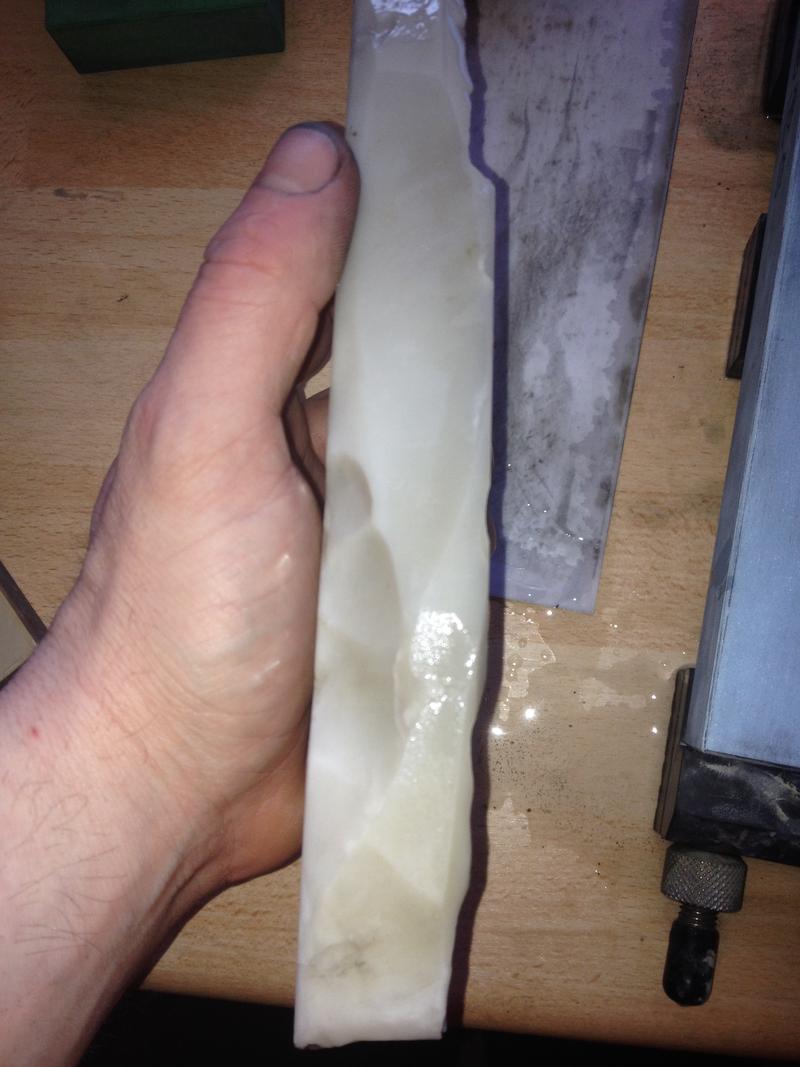My understanding is that "true hard" is to distinguish it from the current "hard" classification (which Natural Whetstones also uses), the current "hard" being softer than the vintage (Norton) "hard" classification, which today might be called "translucent." The word from Dan's is that their "true hard" is a substitute for their "translucent," the price being lower since folks like to have their fetish translucents in a "pure" state.
Again, an interesting chart in this regard: http://danswhetstone.com/stone_grades_101.htm, wherein it shows that the past Federal "hard" classification stopped with what Dan's calls "true hard" and "translucent," and also matched Norton's old designation, whereas the current Federal classification for "hard" extends down into the "soft" range. So, by calling their stones "true hard" and "translucent," Dan's appears to be trying to distinguish what are in effect harder stones from the current, lax Federal designation, and keeping in line with the past or traditional designation. Also interesting is that both "soft/medium" and current "hard" Arkansas stones are considered Washita stones according to the Arkansas Geological Commission.
Again, an interesting chart in this regard: http://danswhetstone.com/stone_grades_101.htm, wherein it shows that the past Federal "hard" classification stopped with what Dan's calls "true hard" and "translucent," and also matched Norton's old designation, whereas the current Federal classification for "hard" extends down into the "soft" range. So, by calling their stones "true hard" and "translucent," Dan's appears to be trying to distinguish what are in effect harder stones from the current, lax Federal designation, and keeping in line with the past or traditional designation. Also interesting is that both "soft/medium" and current "hard" Arkansas stones are considered Washita stones according to the Arkansas Geological Commission.




